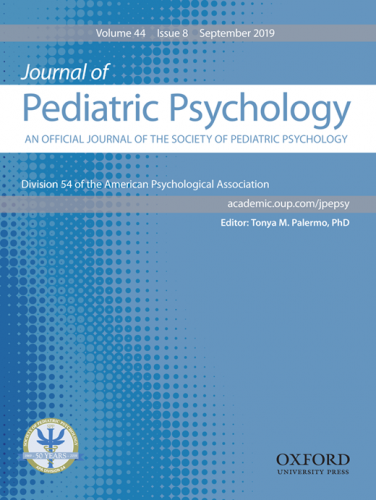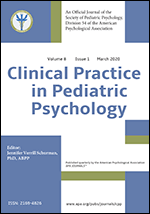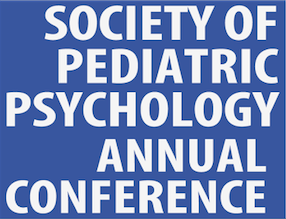Fact Sheet: Child and Adolescent Obesity
Obesity, a chronic medical disease, is defined as accumulation of excessive body adipose tissue stemming from an imbalance between energy intake and expenditure. Body mass index (BMI; kg/m2), an index of weight relative to height, is the most commonly used tool to diagnose overweight and obesity. In youth, BMI is calculated relative to age and sex to account for developmental changes. Overweight in youth is classified as a BMI index between the 85th and the 95th percentile based on age and gender norms; obesity is classified as a BMI index at or above the 95th percentile.
Prevalence and Course
The prevalence of childhood obesity continues to be a serious public health challenge. In the U.S., the prevalence of obesity was 18.5% and combined overweight and obesity prevalence was 35.1% in 2015-2016. These prevalence rates have increased fairly steadily over the past three decades. Prevalence rates of overweight and obesity vary by sex, race/ethnicity, and household income.
Health and Psychosocial Consequences
Youth with obesity are at greater risk for chronic health conditions including type 2 diabetes mellitus, cardiovascular disease, hypertension, asthma, sleep apnea, nonalcoholic fatty liver disease, and musculoskeletal pain. These chronic health conditions persist into adulthood, significantly decreasing overall quality of life and life expectancy. Further, these youth are at increased risk to experience bullying, social bias, rejection, and prejudice, internalizing symptoms, low self-esteem, body dissatisfaction, and maladaptive and health compromising behaviors (e.g., disordered eating behaviors, substance use).
Evidence-based Assessment
The U.S. Preventive Service Task Force (USPSTF) recommends to use BMI-for-age and sex as a screening tool for obesity in youth six years and older. National guidelines are essential to guide assessment of physical activity and dietary intake in youth (e.g., daily 60-minutes of moderate-to-vigorous physical activity, MyPlate healthy eating guidelines). Social and emotional functioning should be evaluated, using obesity-specific measures.
Evidence-based Interventions
Behavioral family lifestyle interventions are the most researched interventions targeting pediatric obesity, with data showing small-to-moderate effect size in interventions addressing childhood overweight and obesity. Behavioral family lifestyle interventions target family environmental modification through behavior change in dietary intake and physical activity. Intervention strategies such as monitoring of health behaviors, goal setting, problem-solving, parent modeling and training in behavior parent management skills are used to facilitate health behavior change and maintenance of change for the entire family. Parents are the agents of change, particularly for younger ages. Behavioral family lifestyle interventions vary in format, content, and dose. The Obesity Society recommends at least 26 hours of patient contact for effective treatment.
Culture, Diversity, Demographic, and Developmental Factors
Prevalence rates of overweight and obesity increase with age; adolescents 16-19 years have the highest prevalence (41.5%). Female youth have higher prevalence (35.5%) than their male peers (34.8%). Hispanic youth have the highest prevalence rate (45.8%), followed by their non-Hispanic African-American/Black peers (37.8%), non-Hispanic White peers (29.9%), and non-Hispanic Asian peers (23.2%). Youth from middle-income households have the highest prevalence (19.9%), compared to their peers from low- and high-income households (18.9% and 10.9%, respectively). These factors have significant implications on prevention and intervention participation and treatment outcome.
Resources:
- U.S. Preventive Service Task Force on Childhood Obesity Screening (6 years and older)
- https://www.uspreventiveservicestaskforce.org/Page/Document/RecommendationStatementFinal/obesity-in-children-and-adolescents-screening1
- MyPlate: https://www.choosemyplate.gov
- 5-2-1-Almost None: https://www.nemours.org/services/health/growuphealthy.html
- Traffic Light Diet: Epstein, L. H., Squires, S. (1988). The stoplight diet for children: An eight-week program for parents and children. New York, NY: Little, Brown
Authors: Ke Ding & David Janicke
Date of last update: May, 2019
References
- Abrams, P., & Katz, L. E. L. (2011). Metabolic effects of obesity causing disease in childhood. Current Opinion in Endocrinology, Diabetes and Obesity, 18(1), 23-27.
- Caprio, S., Daniels, S. R., Drewnowski, A., Kaufman, F. R., Palinkas, L. A., Rosenbloom, A. L., ... & Kirkman, M. S. (2008). Influence of race, ethnicity, and culture on childhood obesity: implications for prevention and treatment. Obesity, 16(12), 2566-2577.
- Centers for Disease Control and Prevention (2016). Overweight & Obesity: Children. Retrieved March 19, 2018, from www.cdc.gov/obesity/childhood/defining.html.
- Gray, W. N., Kahhan, N. A., & Janicke, D. M. (2009). Peer victimization and pediatric obesity: A review of the literature. Psychology in the Schools, 46(8), 720-727.
- Grossman, D. C., Bibbins-Domingo, K., Curry, S. J., Barry, M. J., Davidson, K. W., Doubeni, C. A., ... & Landefeld, C. S. (2017). Screening for obesity in children and adolescents: US Preventive Services Task Force recommendation statement. Journal of American Medical Association, 317(23), 2417-2426.
- Harriger, J.A., & Thompson, J. (2012) Psychological consequences of obesity: Weight bias and body image in overweight and obese youth. International Review of Psychiatry, 24, 247-253.
- Janicke, D. M., Steele, R. G., Gayes, L. A., Lim, C. S., Clifford, L. M., Schneider, E. M., ... & Westen, S. (2014). Systematic review and meta-analysis of comprehensive behavioral family lifestyle interventions addressing pediatric obesity. Journal of Pediatric Psychology, 39(8), 809-825.
- Lang, J. E. (2012). Obesity, nutrition, and asthma in children. Pediatric Allergy, Immunology, and Pulmonology, 25(2), 64-75.
- Mathur, P., Das, M. K., & Arora, N. K. (2007). Non-alcoholic fatty liver disease and childhood obesity. The Indian Journal of Pediatrics, 74(4), 401-408.
- Modi, A. C., & Zeller, M. H. (2008). Validation of a parent‐proxy, obesity‐specific quality‐of‐life measure: sizing them up. Obesity, 16(12), 2624-2633.
- Neumark-Sztainer, D., Paxton, S. J., Hannan, P. J., Haines, J., & Story, M. (2006). Does body satisfaction matter? Five-year longitudinal associations between body satisfaction and health behaviors in adolescent females and males. Journal of Adolescent Health, 39(2), 244-251.
- Ogden, C. L., Carroll, M. D., Fakhouri, T. H., Hales, C. M., Fryar, C. D., Li, X., & Freedman, D. S. (2018). Prevalence of obesity among youths by household income and education level of head of household—United States 2011–2014. Morbidity and Mortality Weekly Report, 67(6), 186-189.
- Pulgarón, E. R. (2013). Childhood obesity: a review of increased risk for physical and psychological comorbidities. Clinical Therapeutics, 35(1), A18-A32.
- Sahoo, K., Sahoo, B., Choudhury, A., Sofi, N., Kumar, R., & Bhadoria, A. S. (2015). Childhood obesity: Causes and consequences. Journal of Family Medicine and Primary Care, 4, 187.
- Singh, A. S., Mulder, C., Twisk, J. W., Van Mechelen, W., & Chinapaw, M. J. (2008). Tracking of childhood overweight into adulthood: a systematic review of the literature. Obesity Reviews, 9(5), 474-488.
- Tsiros, M. D., Olds, T., Buckley, J. D., Grimshaw, P., Brennan, L., Walkley, J., ….& Coates, A. M. (2009). Health-related quality of life in obese children and adolescents. International Journal of Obesity, 33(4), 387.
- Tso, M. K., Rowland, B., Toumbourou, J. W., & Guadagno, B. L. (2018). Overweight or obesity associations with physical aggression in children and adolescents: A meta-analysis. International journal of behavioral development, 42(1), 116-131.
- U.S. Department of Health and Human Services and U.S. Department of Agriculture. 2015 –2020 Dietary Guidelines for Americans. 8th Edition. Washington, DC: U.S. Department of Health and Human Services and U.S. Department of Agriculture; 2015.
- Wilfley, D. E., Staiano, A. E., Altman, M., Lindros, J., Lima, A., Hassink, S. G., … Cook, S. (2017). Improving access and systems of care for evidence-based childhood obesity treatment: Conference key findings and next steps. Obesity, 25, 16–29.
- World Health Organization (2018). Health topics: Obesity. Retrieved March 19, 2018, from www.who.int/topics/obesity/en.
- Zeller, M. H., & Modi, A. C. (2009). Development and initial validation of an obesity‐specific quality‐of‐life measure for children: Sizing me up. Obesity, 17(6), 1171-1177.



